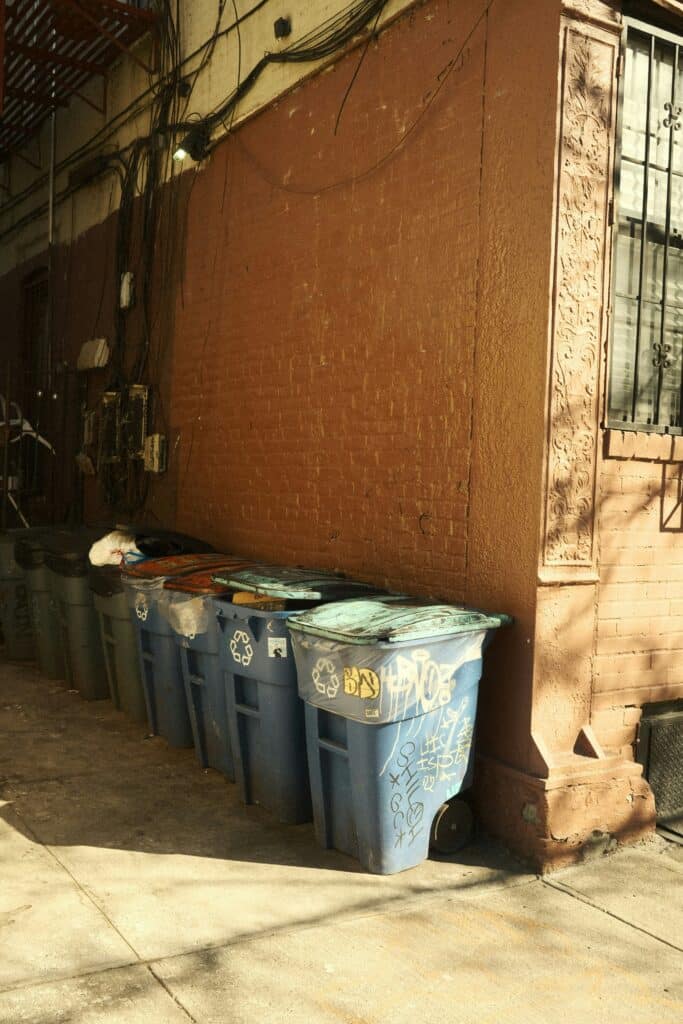But let’s face it, sprucing up your apartment can often seem daunting, especially when dealing with rental restrictions and budget constraints. The good news is, there’s a solution that’s both creative and environmentally friendly: upcycling! 😊

Upcycling, the practice of taking everyday objects and repurposing them into something useful and beautiful, is the perfect way to inject some individuality into your apartment without breaking the bank or violating your lease agreement. Plus, it’s a fantastic way to reduce waste and contribute to sustainability.
In this comprehensive guide, we will explore a variety of apartment-friendly upcycling projects that are perfect for beginners. We’ll start with simple, low-effort transformations and gradually move to projects that require a little more time and creativity. Regardless of your experience level, we promise there’s something for everyone here.
But before we dive into the projects, let’s clarify what upcycling is and why it’s worth considering for your apartment makeover. Upcycling is not just about crafting or DIY; it’s about rethinking our relationship with material objects and redefining what we consider ‘waste’. It’s about looking at a seemingly useless item and seeing its potential for a second, more meaningful life. And it’s this process of transformation – both physical and perceptual – that makes upcycling such a rewarding and fulfilling endeavor.🌱
Why Upcycle?
Upcycling benefits not just your wallet, but also the environment. It reduces the demand for new products, hence decreasing the energy and resources required for their production. Plus, by giving a second life to items that would otherwise end up in a landfill, you help minimize waste and reduce your carbon footprint.
Furthermore, upcycling is an excellent way to foster creativity. It challenges you to think outside the box, come up with innovative solutions, and express your unique style. And let’s not forget about the sense of accomplishment that comes with completing a project with your own hands. It’s pretty much an all-around win!👍
What You Can Expect From This Guide
Now that we’ve established the ‘why’, let’s get down to the ‘how’. This guide will walk you through a selection of easy, apartment-friendly upcycling projects. We’ll start with straightforward ideas that require minimal tools and materials – think tin can planters or wine cork bulletin boards. These projects are perfect for dipping your toes into the world of upcycling.
From there, we’ll venture into more complex transformations, such as turning old ladders into shelving units or repurposing wooden pallets into stylish furniture. While these projects might require a bit more effort, they offer endless opportunities for customization and can truly transform your space.
But don’t worry, we’ll provide step-by-step instructions, tips, and tricks for each project, making the process as straightforward and enjoyable as possible. So, whether you’re a DIY novice or a seasoned upcycler, we invite you to roll up your sleeves, get creative, and join us on this upcycling adventure. Your apartment (and the planet) will thank you! 🏡
Are you ready to transform your space and reduce your environmental impact, one upcycled project at a time? Let’s get started!
Transform Your Living Space: Introduction to Apartment-Friendly Upcycling Projects
With growing concerns about sustainability and the environment, upcycling has become a popular trend. This ingenious practice revolves around transforming discarded materials or useless products into something of greater value. The beauty of upcycling lies in its versatility – it can be as simple as painting a jar or as complex as crafting furniture out of pallets. The aim of this guide is to introduce beginners to easy, apartment-friendly upcycling projects that can transform your living space into a unique and eco-friendly sanctuary.
Before diving into specific projects, let’s delve deeper into the concept of upcycling. Unlike recycling, which breaks down materials to their base form before remanufacturing them, upcycling creatively repurposes existing products. This process reduces waste and environmental impact by extending the life of items and decreasing the demand for new products. Not only is upcycling a sustainable practice, but it also fosters creativity, saving you money while allowing you to customize your space to reflect your personal style.
This guide will provide you with a comprehensive overview of a variety of apartment-friendly upcycling projects, offering detailed instructions, material lists, and practical tips. Additionally, we will compare different upcycling projects in terms of difficulty, cost, and time required. Let’s embark on this sustainable and creative journey together.
🔨 Upcycling Project 1: Transforming Wine Bottles into Decorative Vases
Wine bottles often end up in the recycling bin after a single use, but their sleek design and sturdy material make them ideal candidates for upcycling. With a little creativity and effort, you can turn these discarded bottles into chic decorative vases that can embellish any corner of your apartment.
Firstly, remove the labels from the wine bottles by soaking them in warm water with dish soap. Use a scrubbing brush to remove any stubborn residue. Once the bottles are clean and dry, you can decorate them in various ways. One popular method is painting them with acrylic paint. After applying a primer, you can paint the bottles in any color or design that suits your décor. Seal the paint with a clear spray sealer to ensure durability. Now you have a beautiful vase for fresh flowers or even a stylish candle holder.
For a visual guide on how to transform wine bottles into decorative vases, watch “DIY Wine Bottle Vases” by the Home Repair Tutor on YouTube.
Materials Needed:
- Wine bottles
- Warm water
- Dish soap
- Scrubbing brush
- Acrylic paint
- Clear spray sealer
🖼️ Upcycling Project 2: Turning Old Picture Frames into Elegant Serving Trays
Old picture frames often collect dust in storage closets, but they can easily be upcycled into elegant serving trays. This project is not only practical but also adds a touch of vintage charm to your apartment.
Start by removing the back of the picture frame and setting the glass aside. Paint the frame in a color that complements your home décor. Once the paint is dry, place the glass back into the frame. Instead of a picture, insert a beautiful piece of fabric or wallpaper that matches your style. Attach handles to the shorter sides of the frame, and voila, you have a custom serving tray.
For a step-by-step guide on how to make a serving tray from an old picture frame, check out “DIY Picture Frame Tray” by The DIY Mommy on YouTube.
Materials Needed:
- Old picture frame
- Paint
- Fabric or wallpaper
- Handles
📚 Upcycling Project 3: Converting Books into Unique Shelves
With the rise of digital reading, physical books are often left neglected on bookshelves. Instead of discarding these literary gems, you can upcycle them into unique shelves that can hold small objects or more books.
To start this project, choose a hardcover book that you no longer read. Attach two metal brackets to one side of the book, one near the top and one near the bottom. Make sure the brackets are sturdy enough to support the weight of the items you plan to place on the shelf. Once the brackets are secure, you can mount the book onto the wall, creating a floating bookshelf.
For more details on how to create a bookshelf out of old books, watch “How to Make a Floating Bookshelf” by I Like To Make Stuff on YouTube.
Materials Needed:
- Hardcover book
- Metal brackets
Comparison of Apartment-Friendly Upcycling Projects
Now that we have explored three easy and apartment-friendly upcycling projects, let’s compare them in terms of difficulty, cost, and time required.
| Project | Difficulty Level | Cost | Time Required |
|---|---|---|---|
| Wine Bottle Vases | Easy | Low | 1-2 hours |
| Picture Frame Serving Tray | Medium | Medium | 2-3 hours |
| Book Shelves | Hard | Medium | 3-4 hours |
Upcycling is not only a sustainable practice but also a fun and creative way to personalize your living space. Remember, the aim of these projects is not perfection, but rather to enjoy the process and create something unique that you love. Happy upcycling!
Conclusion
In conclusion, this article has attempted to cover a broad spectrum of elements integral to the field of Information Technology and Engineering. From exploring the intricate dynamics of software development methodologies, deep-diving into data analysis, elucidating the nuances of network security to demystifying complex algorithms – our journey has been both enriching and insightful. 🎓💻
A key takeaway from this discourse is the imperative role technology plays in shaping our world. It is important to underscore the vitality of continuous learning and adaptation in these swiftly evolving domains. As highlighted, the impact of a well-structured software, the cruciality of thorough data analysis, the indispensability of robust security measures, and the power of algorithms, cannot be overstated.
Furthermore, the advent of disruptive technologies such as Artificial Intelligence, Machine Learning, and Blockchain has revolutionized the IT and Engineering landscape. By leveraging these technologies, businesses are not only augmenting their operational efficiencies but are also carving new avenues of growth and innovation.
In retrospect, the focus of this article has not been confined to the theoretical aspects of IT and Engineering. It has also underscored the practical implications and real-world applications of these concepts. The aim was to present a balanced view that seamlessly intertwines theory with practice, thereby facilitating a holistic understanding.
However, it is crucial to remember that this article only scratches the surface. The domains of IT and Engineering are vast and ever-evolving. There are numerous other facets to explore and countless insights to glean. For those who wish to delve deeper into these subjects, I recommend this comprehensive resource from [MIT](https://ocw.mit.edu/courses/electrical-engineering-and-computer-science/) and [Stanford](https://online.stanford.edu/courses/soe-ycs0001-computer-science-101) as a starting point. 🚀🌐
Engaging with the content is not only beneficial for the reader, but it also contributes to the larger community of IT and Engineering enthusiasts. I encourage you to comment, share your thoughts, and apply the learnings in your personal or professional journey. By doing so, you’ll not only augment your understanding but also inspire others to follow suit. 🗣👥
Before we sign off, let’s take a moment to appreciate the relentless efforts of engineers and IT professionals. Their tireless endeavor to push the boundaries of technology has redefined our lives in ways unimaginable. Here’s a tip of the hat to these unsung heroes. 🙌👏
Thank you for staying with us until the end of this journey. Your interest in expanding your knowledge is commendable. Stay curious, stay inspired. Until next time, happy learning! 🎈🎉
`
Comments
`
`
Share
`
`
Apply
`
Remember, technology shapes our world, and we shape technology. Let’s continue to build, learn, and grow together.



